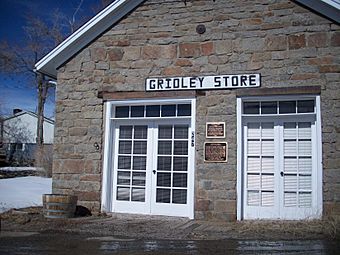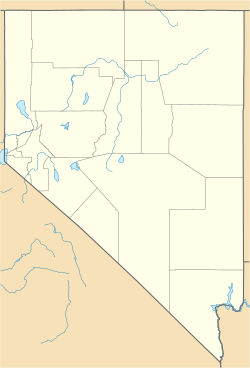Gridley Store facts for kids
Quick facts for kids |
|
|
Gridley Store
|
|
 |
|
| Location | 247 Water St., Austin, Nevada |
|---|---|
| Area | 0.1 acres (0.040 ha) |
| Built | 1863 |
| NRHP reference No. | 03000752 |
| Added to NRHP | August 14, 2003 |
The Gridley Store is a historic building located at 247 Water Street in Austin, Nevada. It was built in 1863. This building became famous in 1864 during the American Civil War because of a unique event.
Contents
The Gridley Store: A Special Place
The Gridley Store is known for a funny and important story involving a man named Reuel Colt Gridley. He reportedly lost a bet. As a result, he had to carry a 50-pound (23 kg) sack of flour all through the town of Austin.
The Famous Flour Sack Story
What started as a simple bet turned into something much bigger. Gridley decided to sell the sack of flour to raise money. This money was for the U.S. Sanitary Commission. This group helped Union soldiers who were hurt during the Civil War.
The flour sack was sold and resold many times. People would buy it, then donate it back to be sold again. This clever idea raised a lot of money. It gathered funds not just in Austin, but across Nevada and even in the eastern United States. The famous writer Mark Twain even supported this special fundraising effort.
Helping Soldiers During the Civil War
The U.S. Sanitary Commission was a private organization. It worked to support sick and wounded soldiers during the Civil War. They provided medical supplies, food, and other aid. The money raised from Gridley's flour sack helped this important cause.
About the Building Itself
The Gridley Store is a one-story building made of granite stone. It is also known as the Gridley & Hobart Store or the Gridley Store Museum. In 2003, it was added to the National Register of Historic Places. This means it is recognized as an important historical site in the United States.
The outside of the building looks much like it did after being updated around 1985.
A Museum Today
In 2003, the Gridley Store was being used as a museum. The Austin Historical Society managed it. They helped share the building's history and the story of the famous flour sack with visitors.



